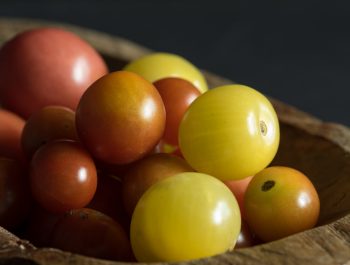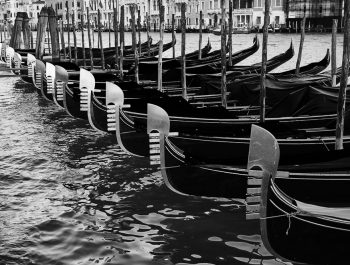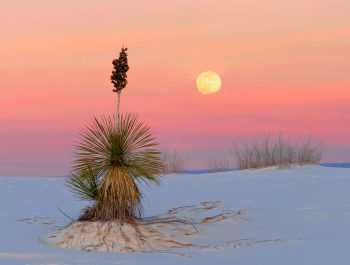Evolving Light and Food Photography
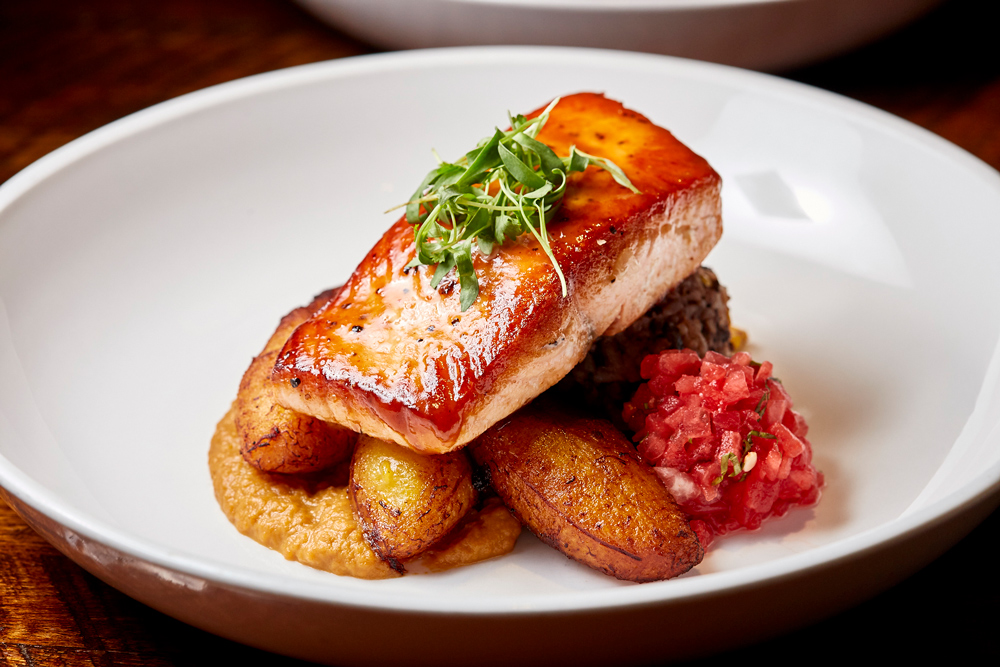
Photographers are always chasing light. Sometimes it’s the light that’s in the scene we’re chasing — sunrises and sunsets. Other times, it’s the light we bring to it. My journey as a food photographer has taught me much about light.
Photographing food, especially in restaurants, has taught me the most about what light means to an image. In the same way the golden hour matters to us as landscape or even portrait photographers, the right light makes all the difference to the subject of food.
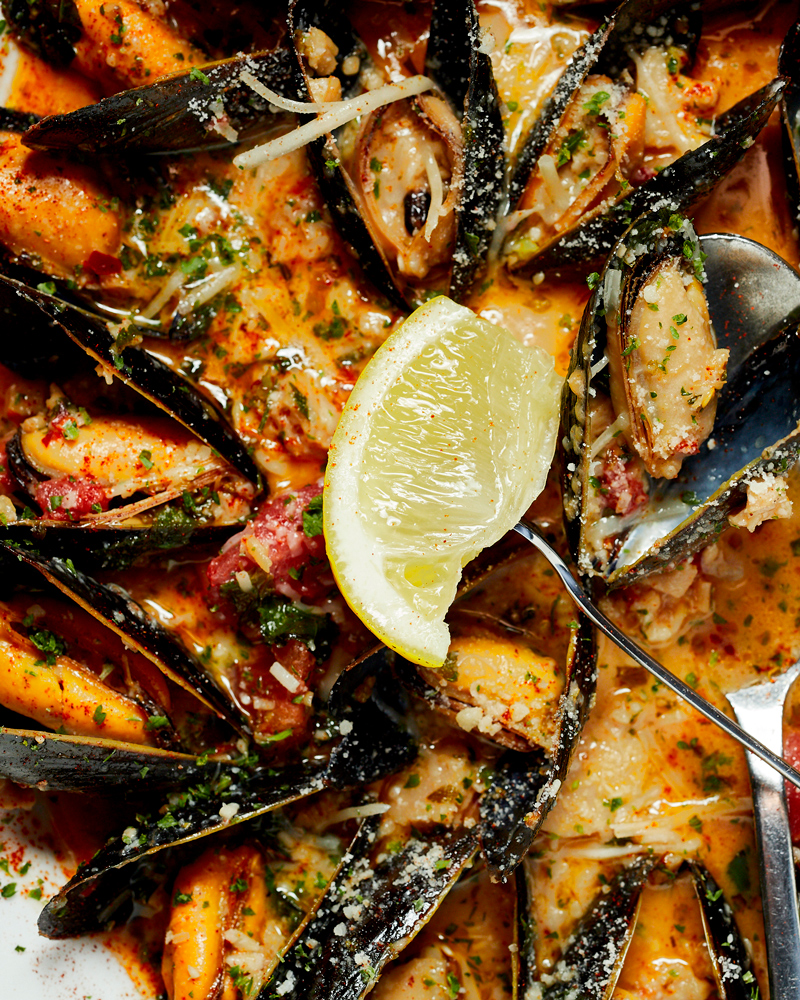
I liken food photography to landscape photography. What I mean is that both are highly accessible; after all, we eat every day. And, permission isn’t needed to at least take an image of the tasty plate or beautiful vista before us. But, take a tour of the #food hashtag on Instagram, and you’ll see that just showing up isn’t enough.
The Problem
Two years ago, I was invited to join a social media group with two common interests: local restaurants and food photography. Fast-forward to today, I find myself as part of a review team, making images for two television stations’ website’s “Foodie Spotlight” sections.

Lighting in most restaurants isn’t positioned with the photographer in mind. There is some mix of horrible overhead lighting with awful yellow or green color casts and inconvenient shadows. If you’re lucky to find a seat next to a window, it might be the wrong time of day. Challenging, to say the least. So, how do we make good-looking food images in restaurants?
Solution One: Natural Light

When I started with the group, I shot nothing but natural light — we all did. We began in late spring. Even then, we often had respectable daylight from 7 to 8 pm. We typically had our choice of tables, so getting a prized window seat wasn’t usually a problem.
There are many food photographers who make beautiful images only in natural light. It’s in the same way a cloudy day or the golden hour makes for interesting landscapes or portraits. And that’s the advantage: beautiful quality of light. The disadvantage is that it can be in short supply or only available at the wrong time.

Even with ample daylight, there were technical trade-offs. These were not situations where a tripod was feasible. Most often, I was making images at f/2.8 and a minimum ISO of 1000. Thinking of the exposure triangle, I didn’t have much wiggle room.
Later in the year, however, the tables turned. Natural light was beginning to run out as soon as we were seated. You soon realize that when there is nothing but the restaurant’s built-in ambiance lighting, a change is needed and fast.
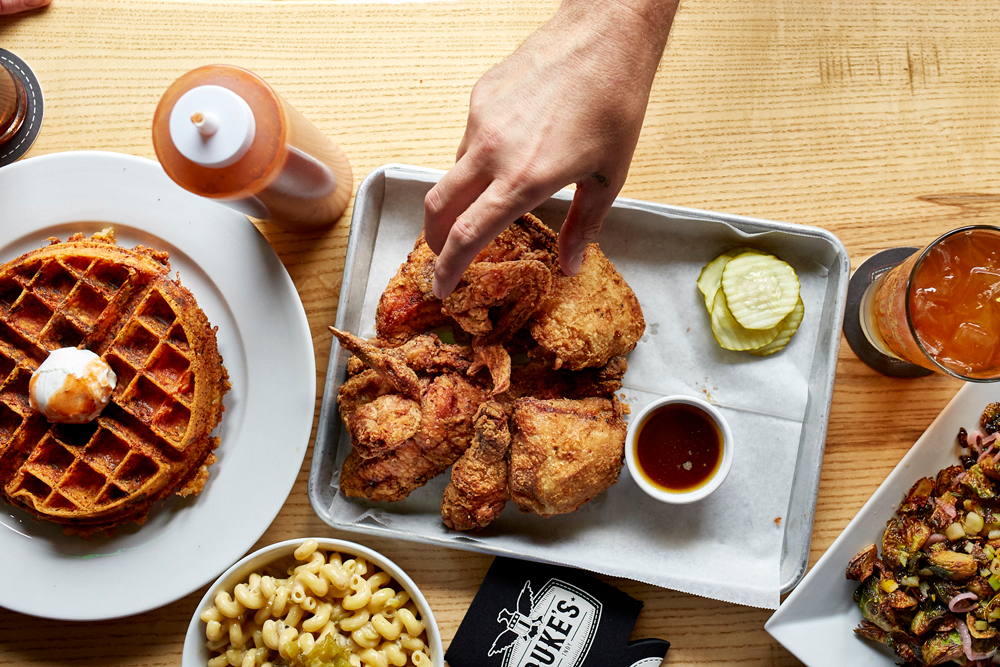
Another factor is that I wanted to set my images apart. Renowned fashion photographer Peter Coulson once made a comment about one’s work looking “same-y.” It won’t be long until you reach a point where your image looks a lot like anyone else’s because of the limited conditions. I knew the light had to change.
Solution Two: Constant Light
What I found that worked well was a small AA-powered LED light bank by Godox. This easily gave me f/5.6 at ISO 800. And most importantly, it gave me consistent color. This solution, paired with a Canon DSLR and some small prime lenses, got me through the first winter. It worked so well that several others in our group bought similar lights.
For most people looking to make better images in restaurants, this is my first recommendation. These lights are small enough to fit in purses or most camera bags. Used correctly, they can make very respectable images. Admittedly, it can be a bit tricky, especially when you are holding the light in one hand in just the right spot. In the other, you would be holding the camera, trying to get the right angle and composition.
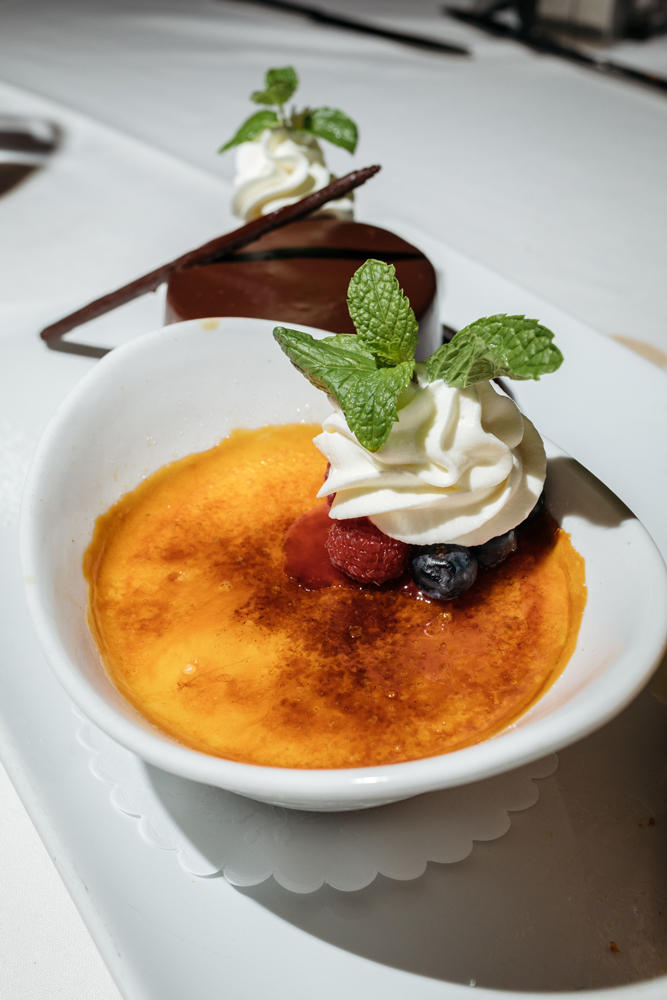
Still, as I shot more at my home studio with strobes, I wanted to create that same look at the restaurant. And, that’s when I decided I was going to be that guy — I’m going to bring off-camera flash to the dinner table.

Solution Three: Speedlights
Off-camera flash as a technical ability still seems equal to space exploration for most photographers. A few have been there, but it’s too far for most to go. It’s a whole new set of variables for folks who don’t even like to get out of automatic exposure modes.
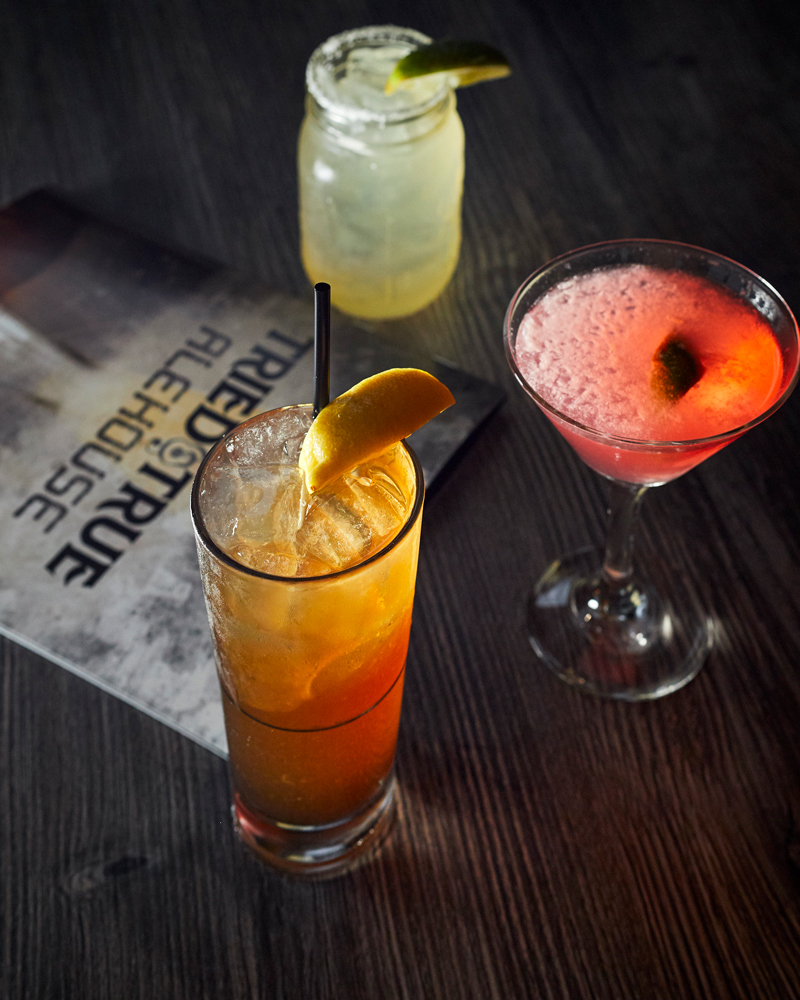
David Hobby and Zack Arias have informed many photographers of the merits of manual, off-camera flash (OCF). And a few years before deciding to specialize in food, I learned the basics of OCF from these gentlemen. I still consider it to be some of the best educational material available.
At first, my setup was … odd. A couple of PocketWizard Plus II radios. A Nikon SB-28DX speedlight. And, a Lumiquest foldable softbox. Some Velcro. Weird as I looked, I was making fast, diffused light that significantly elevated my image quality.
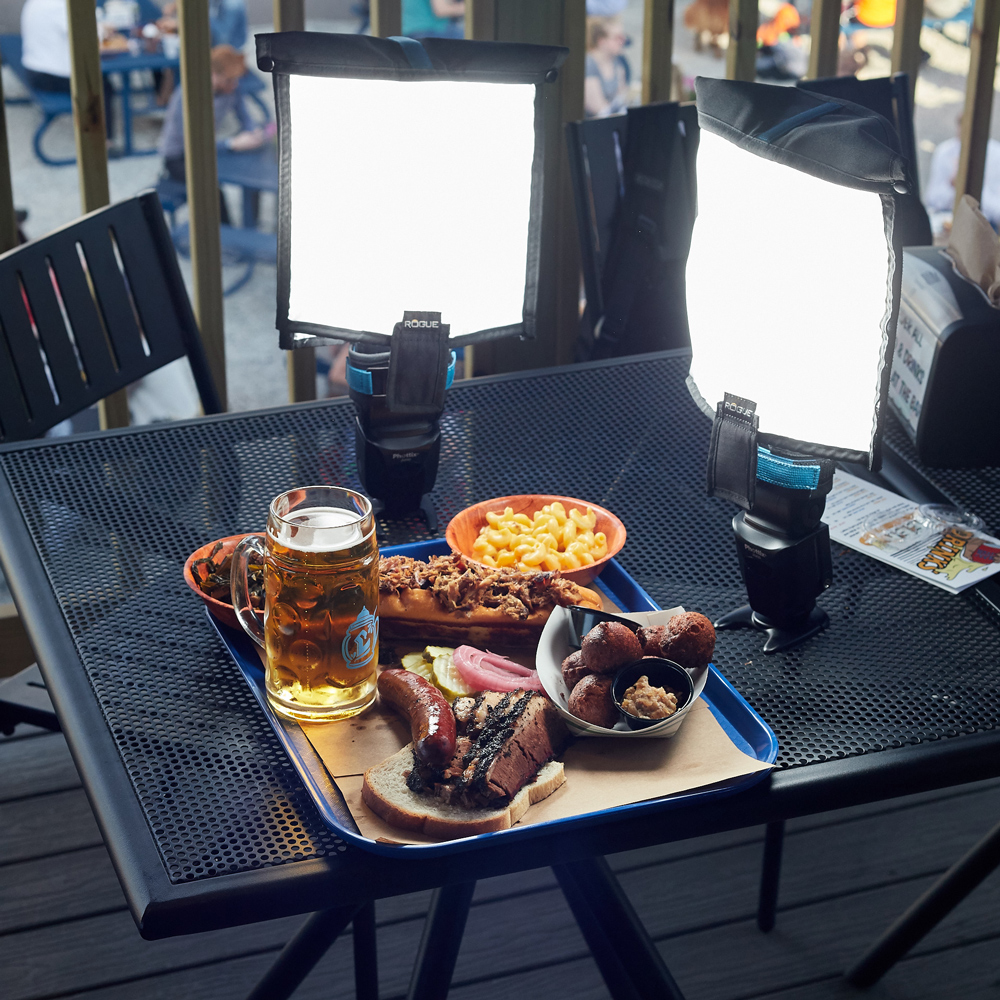
Most agree that image sharpness is a critical factor in image quality. Without flash, you must rely on shutter speed and a steady hand to take sharp images. Flash duration in most cases solves both of those conundrums.
Another advantage of speedlights is power. And, with power comes convenient things like depth of field. While shallow DOFs can work and even help to isolate areas of interest, food often benefits from having more in focus. With speedlights, I routinely shoot at f/8 and can easily get to f/16 or more, if needed.
Current State
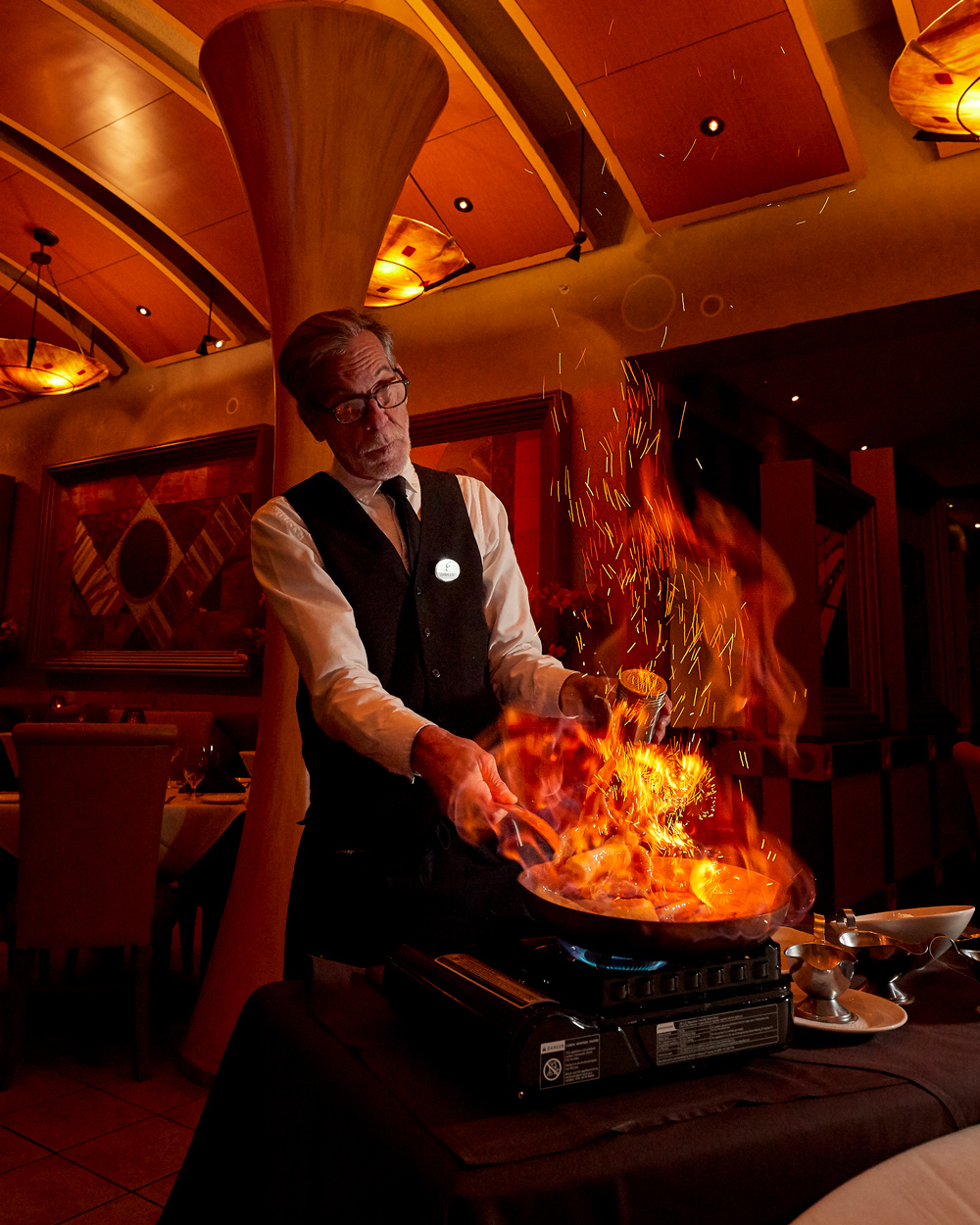
Where I am today is a two-light setup: two Phottix Juno manual flashes and the Ares remote. I use the Rogue Flashbender large softboxes to modify these lights. This works for close-ups, macro images of details, and all the way to overhead tablescapes of multiple images pates. Why two lights? Fill. One challenge I always had, starting with the LEDs, was shadows. At these close ranges, light falls off very quickly. For a while, a small piece of white foam-core worked well as a bounce card. But, I find that the second strobe gives me more control.
Another advantage of strobes is the added, creative possibilities. Some examples include pumping light through colorful drinks and capturing the action, mixing with the ambient. Again, it’s about control. Neither daylight nor small, constant lights give this type of command over the situation.
Conclusions

A prospective client asked me recently, “What makes a good image?” My response was “light.” Light (and shadow) is often what separates an average picture from a good or even great image. As photographers, we have to realize what elements are within our control. These small light options can really take images from boring and bland to five stars.
Dave Pluimer is a commercial food and beverage photographer in Indianapolis. He is a two-time finalist in the International Color Awards and clinched the first place in 2018. Find more of his work on his website: www.davepluimer.com.
You can also find Dave on Facebook and Instagram
David Pluimer
July 2019
ZIONSVILLE, IN
Dave Pluimer is an award-winning food and beverage photographer. His work has appeared in publications such as Photo District News, Cara, Indiana at 200, and Edible Indy. Dave has been twice awarded in the annual International Color Awards, including 1st Place/ Outstanding Achievement-Food during the 2018 awards. He was awarded 1st place Professional Black & White, Best of Show, and Top 10 Indiana Photographer during the 2015 Indiana State Fair print competition. Dave lives in Zionsville with his wife and daughter.






